Unexpected T-38A Flyover at Rogue Valley International Airport: A Spectacle from Multiple Angles
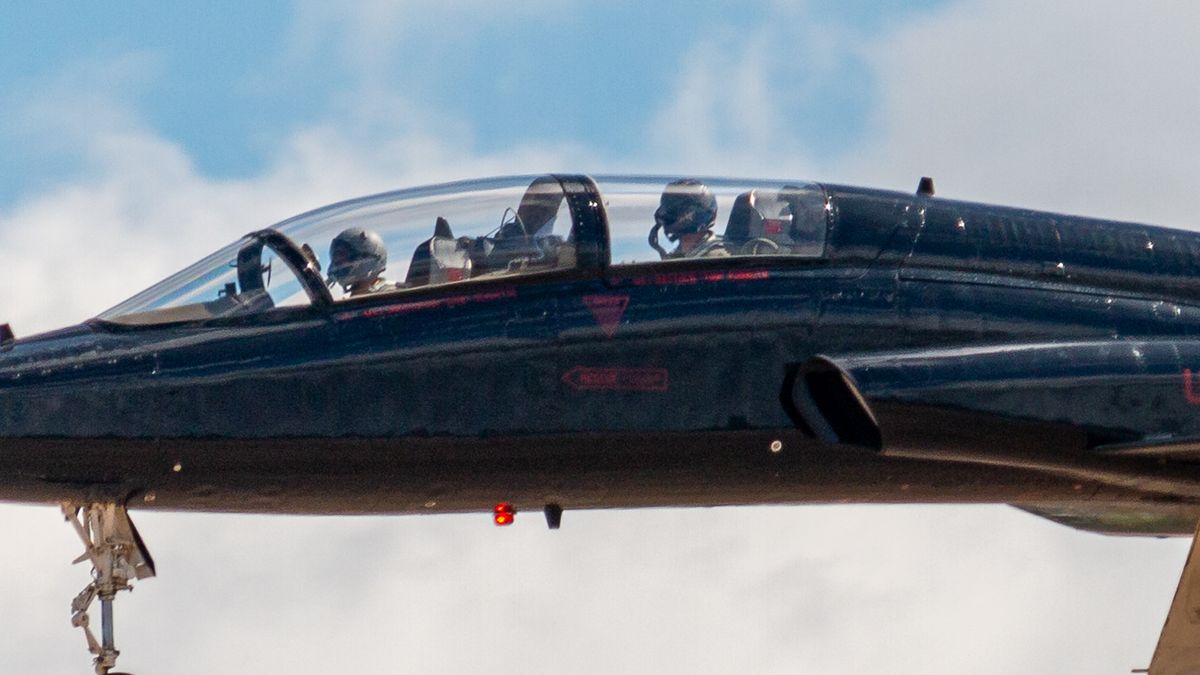
On Wednesday 9/20/23, a Northrop T-38A traveled from Beale Air Force Base, circling Crater Lake before heading to Rogue Valley International Medford Airport (KMFR). Before landing, the T-38 conducted a flyover, followed by a low-pass break—a maneuver involving a sharp turn to reduce speed—before coming in for a landing on Runway 32. Its arrival was unanticipated and coincided with Scott Swanson and Tim Crippin plane spotting activity from two different locations around the airport, allowing for multiple angles of the approach and landing.
The T-38A Talon houses two General Electric J85-GE-5 turbojet engines, each delivering a dry thrust of 2,050 pounds, and up to 2,900 pounds with afterburners engaged. This engineering, coupled with a streamlined design, propels the jet to a top speed of 812 mph (Mach 1.08 at sea level). Its tricycle landing gear, featuring a steerable nose wheel, supports smooth takeoffs and landings, with only 2,300 feet of runway needed for takeoff. The T-38A can ascend from sea level to nearly 30,000 feet within a minute, showcasing the high-performance attributes vital for pilot training.
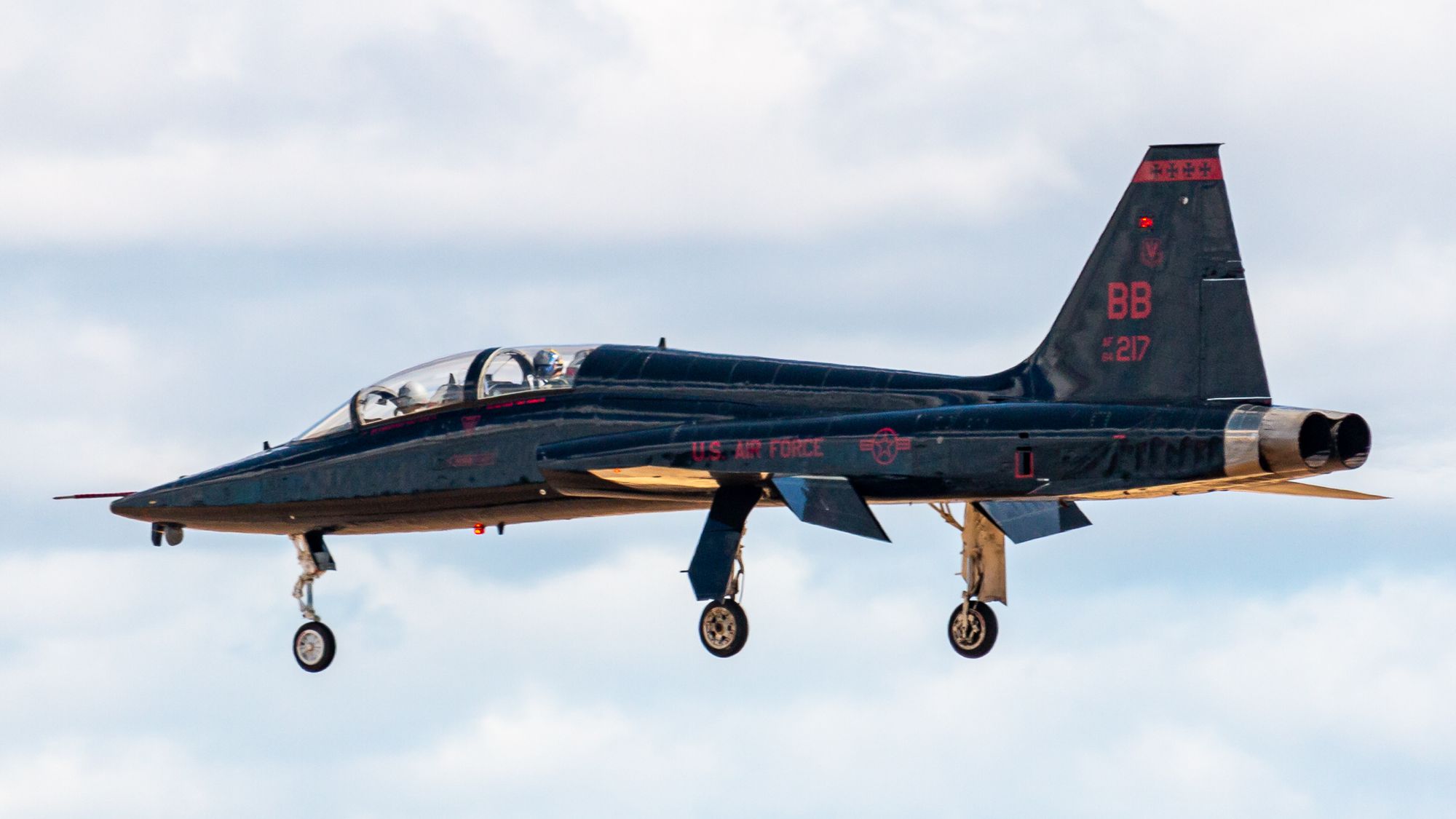
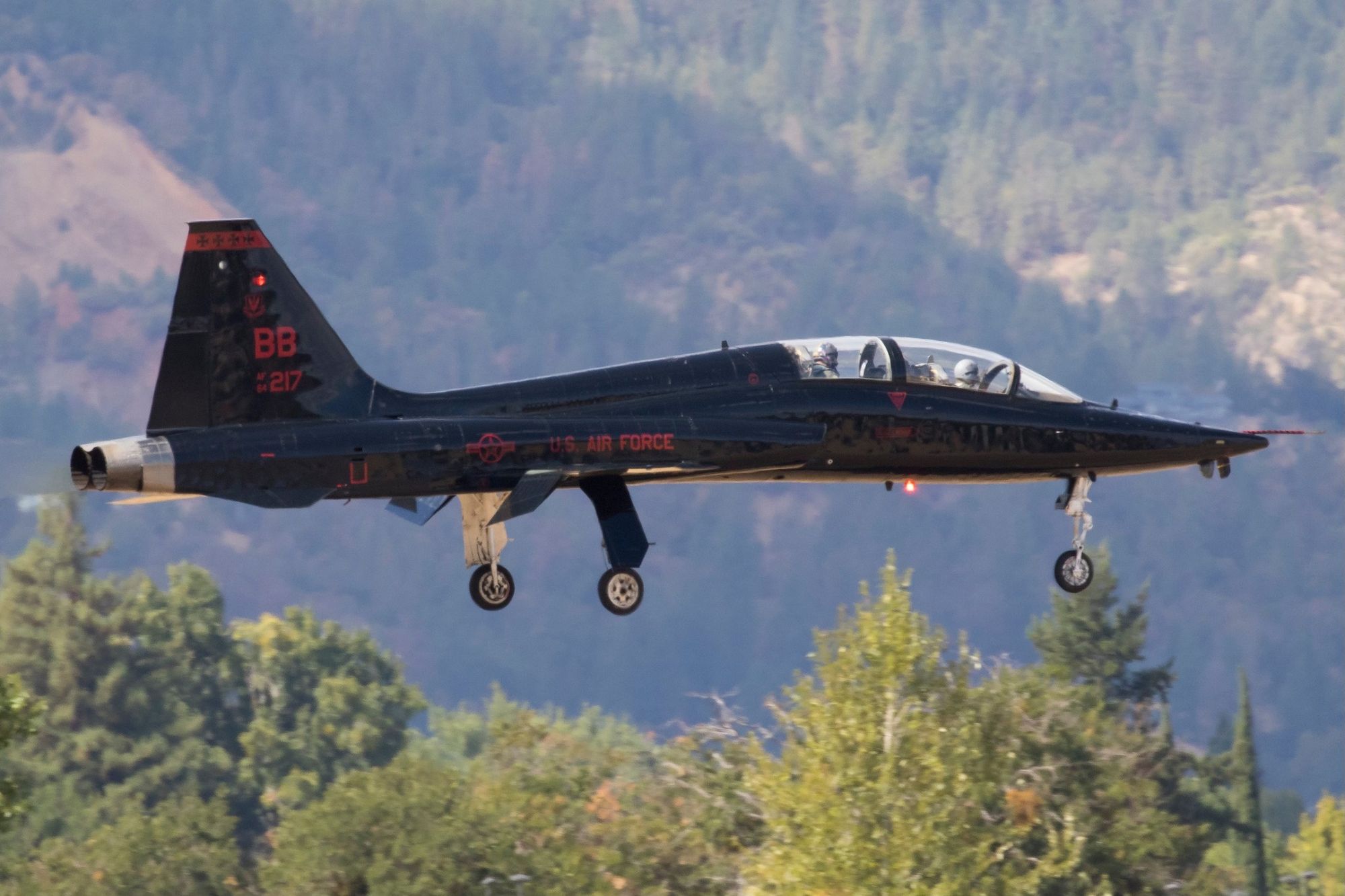
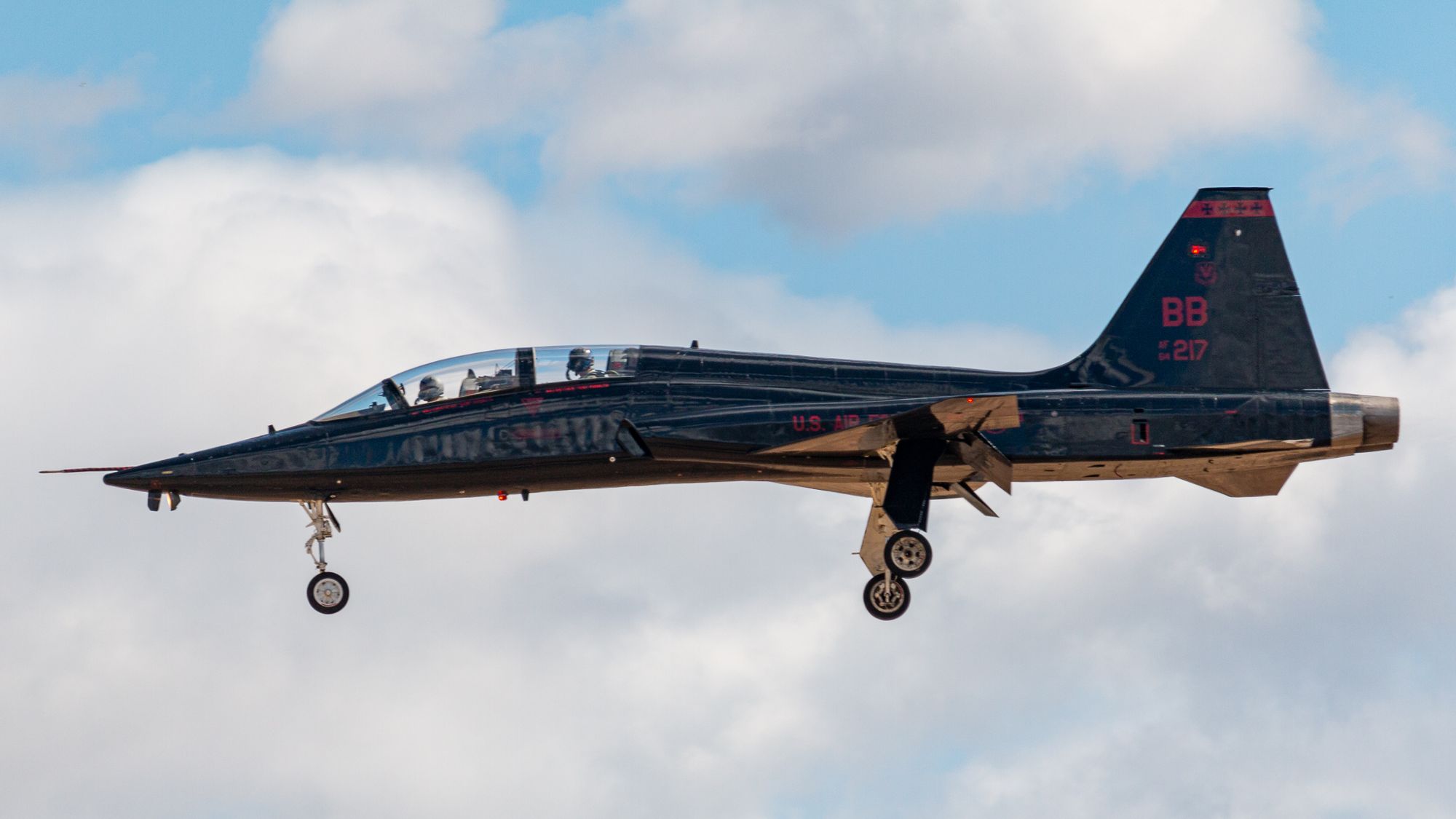
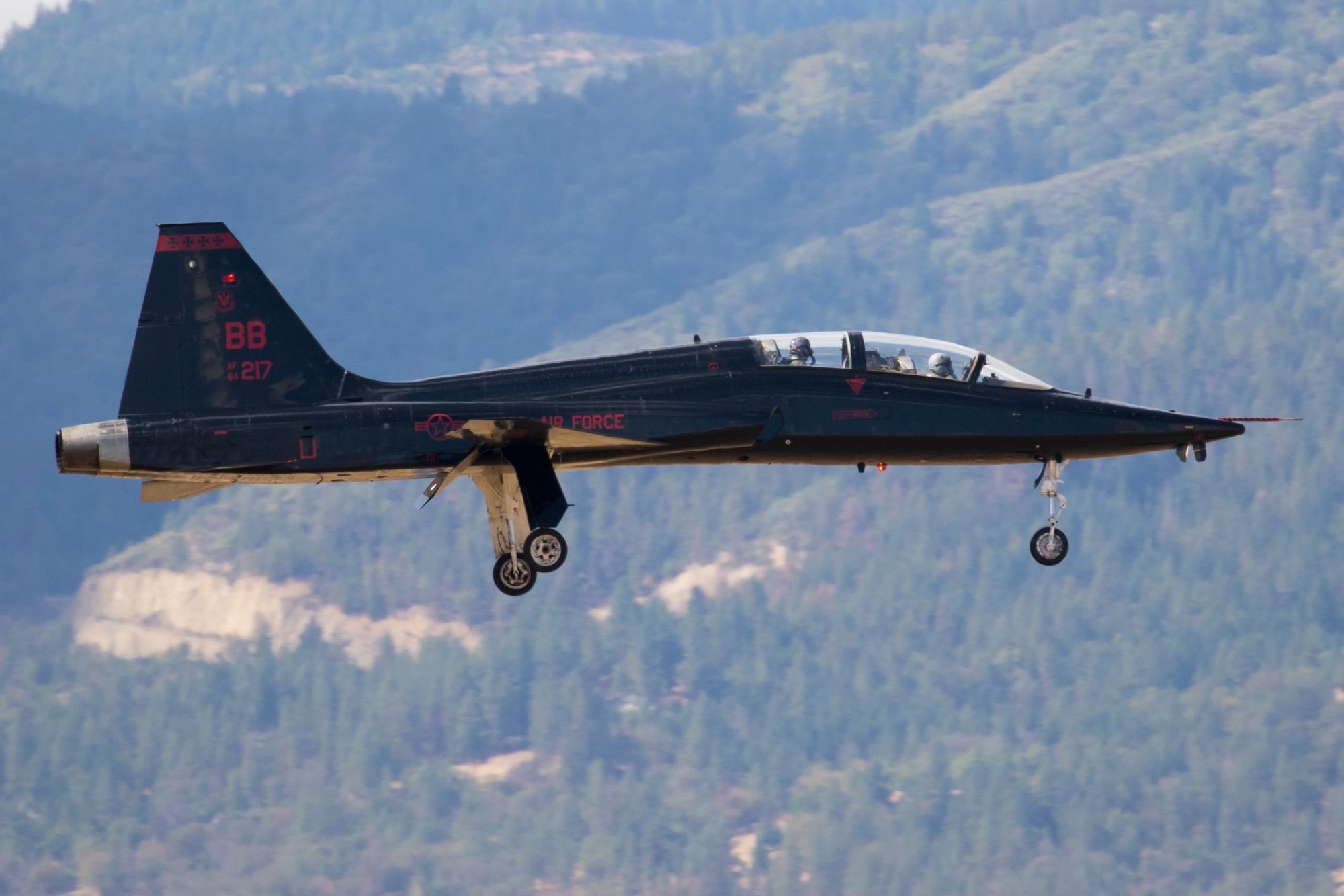
The T-38 series serves various roles due to its design, economical operation, ease of maintenance, high performance, and exceptional safety record. While other variants like the T-38C incorporate modernized "glass cockpit" technology and the AT-38B carries practice armaments, the T-38A is primarily used at Beale AFB to prepare pilots for the U-2 program.
At Beale AFB, the T-38A serves as a companion trainer to the U-2 program. The U-2, known for its high-altitude, all-weather surveillance, and reconnaissance capabilities, requires proficient and adept handling from its pilots. The T-38A, with its ease of maintenance and outstanding safety record, prepares pilots for the rigorous operational demands of the U-2 program. Its service at Beale AFB creates a conducive training environment, ensuring U-2 pilots are well-equipped to handle the demands of high-altitude reconnaissance missions.
The collaboration between the T-38A and U-2 programs at Beale AFB contributes to the goal of maintaining a ready force capable of executing crucial surveillance and reconnaissance missions, enhancing the operational capability and readiness of U.S. and allied forces.